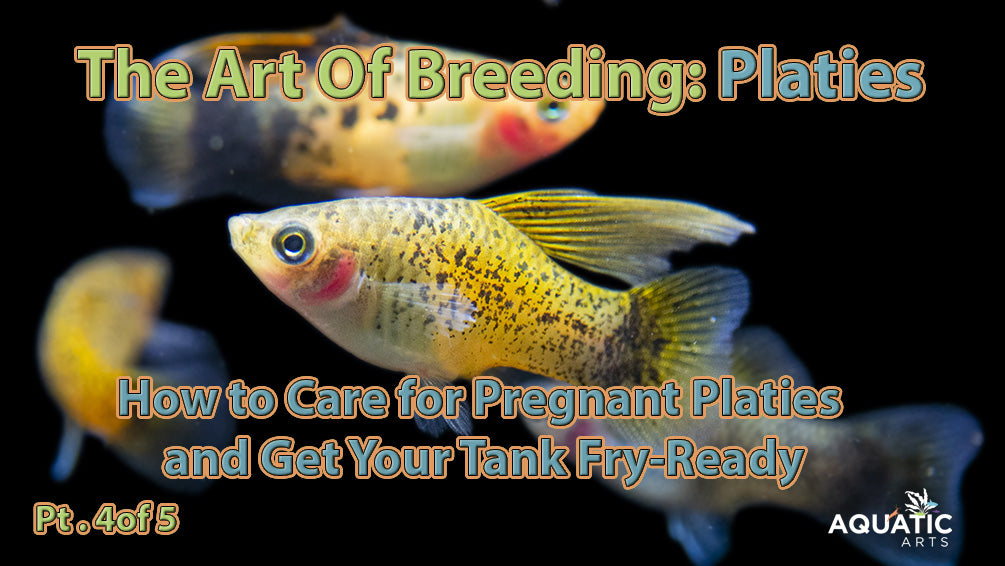How to Care for Pregnant Platies and Get Your Tank Fry-Ready

Making Sure Your Pregnant Platy Stays Healthy and Preparing for New Fry
Once you’ve spotted that telltale rounded belly and dark gravid spot on your female Platy, it’s time to make a few adjustments to help her through the pregnancy and prepare for the arrival of fry. This post will cover essential tips on caring for pregnant Platies, as well as ways to set up a safe space for the fry when they arrive.
Recognizing and Caring for Pregnant Platies
Signs of Pregnancy
A pregnant Platy will develop a noticeably rounder belly, and you’ll see a dark area near her rear fin called the “gravid spot.” This spot will darken as her pregnancy progresses, and she may also become slightly less active.
Special Care for Expectant Females
Provide a calm, low-stress environment for your pregnant Platy, with plenty of hiding spots and a varied diet. Ensure water parameters remain stable and avoid overhandling her. Live plants and small caves offer safe areas where she can rest as her fry develop.
Preparing the Tank for Fry
When fry are born, they need safe spaces to avoid being eaten by adult fish, including their mother. Setting up a few dedicated hiding spots or even a breeder box within the tank can provide this protection.
Best Hiding Spots for Fry
Live plants like Java Moss and Water Sprite create natural hiding areas. Fry can easily tuck into the dense greenery, making it harder for adults to reach them. Breeder boxes can also help you keep fry safe until they’re big enough to be released into the main tank.
Q&A: Caring for Pregnant Platies and Preparing for Fry
Q: How can I tell if my Platy is pregnant?
A: Look for a rounded belly and a dark gravid spot near the rear fin.
Q: How long is a Platy’s pregnancy?
A: Typically, about 28 days from conception to birth.
Q: What should I feed my pregnant Platy?
A: A mix of flakes, freeze-dried, and live foods supports her health during pregnancy.
Q: Do I need a separate tank for Platy fry?
A: Not necessarily, but having dense plants or a breeder box provides safe spaces.
Q: How many fry can a Platy have?
A: A female can have anywhere from 20–50 fry, depending on her size.
Q: Should I separate the mother after she gives birth?
A: It’s a good idea to either move her or ensure plenty of hiding spots for the fry.
Q: Do pregnant Platies behave differently?
A: They may become more reserved and look for hiding places.
Q: How can I make the tank fry-safe?
A: Adding dense plants or a breeder box will protect fry from adults.
Q: What’s the best food for newborn fry?
A: Special fry food, crushed flakes, and baby brine shrimp work well.
Q: How often do Platies give birth?
A: Every 4–6 weeks, if conditions are right.
Caring for a pregnant Platy and preparing for fry is one of the most rewarding stages of the breeding process. With a bit of planning and a safe tank environment, you’ll soon have a thriving new generation. In our final blog post of this series, we’ll discuss how to care for and raise your Platy fry, ensuring they grow into healthy, vibrant fish. Stay tuned for tips on fry care and advice for managing your growing Platy family!
Check out the full series in order below:
Blog 1: Why Platies Are a Beginner Breeder’s Dream Fish
Blog 2: Platy Breeding Tank Setup Made Simple: Essentials for Success
Blog 3: How to Care for Pregnant Platies and Get Your Tank Fry-Ready
Blog 4: Raising Platy Fry and Creating a Thriving Breeding Program




